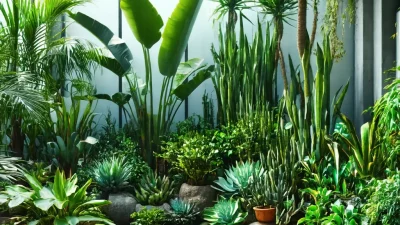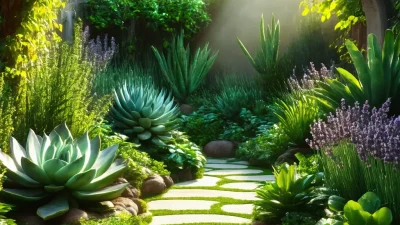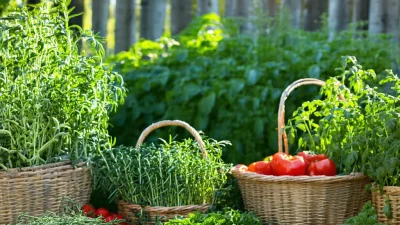Top 10 Edible Flowers You Should Grow in Your Garden
Gardening is more than just a hobby; it’s an art form that can also be a source of delicious, nutritious ingredients. While most gardeners focus on fruits and vegetables, there’s a world of edible flowers waiting to be explored. These floral delicacies not only add beauty to your garden but also bring a unique flavor profile to your dishes. Whether you’re a seasoned gardener or just starting out, incorporating edible flowers into your garden can elevate your culinary creations and provide a fresh, seasonal ingredient for your kitchen.
Why Grow Edible Flowers?
Edible flowers are making waves in the culinary world for good reason. They offer a burst of color, flavor, and nutrition that can’t be matched by traditional vegetables or herbs. Here’s why you should consider adding them to your garden:
- Unique Flavors: Edible flowers bring a distinct taste profile to dishes, from the peppery kick of nasturtiums to the sweet, floral notes of pansies.
- Nutritional Benefits: Many edible flowers are packed with vitamins and antioxidants, making them a healthy addition to your diet.
- Aesthetic Appeal: Nothing adds a pop of color to a dish like fresh edible flowers. They’re perfect for garnishing plates or creating visually stunning salads.
- Sustainability: Growing your own edible flowers reduces the need for store-bought, often imported options, supporting local and seasonal eating.
The Top 10 Edible Flowers to Grow in Your Garden
Ready to add some floral flair to your garden? Here are our top picks for edible flowers that are easy to grow and delicious to eat:
1. Nasturtiums
Nasturtiums are a gardener’s favorite for their bright, cheerful blooms and tangy flavor. Both the flowers and leaves are edible, adding a peppery crunch to salads or as a vibrant garnish. They thrive in poor soil and full sun, making them ideal for beginner gardeners.
2. Pansies
Pansies bring a burst of color to your garden with their delicate, heart-shaped blooms. Their mild, slightly sweet flavor makes them perfect for adding to salads or as a decorative touch on cakes and pastries. They prefer cooler temperatures and partial shade.
3. Calendula (Pot Marigold)
Calendula flowers are known for their vibrant orange and yellow hues. Their slightly spicy, tangy flavor pairs well with soups, stews, and rice dishes. Calendulas are also rich in antioxidants and have been used historically for medicinal purposes.
4. Violas
Violas, often called Johnny-jump-ups, are smaller cousins of pansies with a sweet, floral taste. Their tiny blooms add a delicate touch to salads or as edible confetti on desserts. They’re easy to grow and thrive in both sun and shade.
5. Borage
Borage flowers are often used in Mediterranean cuisine for their cucumber-like flavor. The star-shaped blue blooms are a striking addition to any garden and can be eaten raw or cooked. They also attract pollinators like bees, making them a beneficial companion plant.
6. Lavender
Lavender is not only a fragrant herb but also an edible flower. Its subtle, floral taste is perfect for adding to teas, desserts, and even savory dishes like roasted meats. Choose culinary varieties of lavender for the best flavor.
7. Chamomile
Chamomile flowers are famous for their calming properties in tea. Their delicate, apple-like flavor makes them a favorite for herbal teas and infusions. They’re also beautiful in salads or as a garnish for drinks.
8. nasturtiums
Nasturtiums are a gardener’s favorite for their bright, cheerful blooms and tangy flavor. Both the flowers and leaves are edible, adding a peppery crunch to salads or as a vibrant garnish. They thrive in poor soil and full sun, making them ideal for beginner gardeners.
9. Sunflowers
Sunflowers are more than just towering giants; their petals can be eaten raw or cooked, offering a slightly sweet, nutty flavor. The seeds, of course, are a favorite snack and rich in healthy fats and proteins.
10. Hibiscus
Hibiscus flowers are known for their striking appearance and tart, cranberry-like flavor. They’re often used in teas, cocktails, and salads. Choose hibiscus varieties specifically grown for consumption to ensure they’re safe to eat.
Tips for Growing Edible Flowers
Before diving into growing edible flowers, keep these tips in mind:
- Know Your Varieties: Not all flowers are edible. Research which varieties are safe to eat and ensure they haven’t been treated with pesticides or chemicals.
- Harvest at the Right Time: Pick flowers in the morning when they’re fresh and avoid those that have started to wilt.
- Store Properly: Keep edible flowers refrigerated and use them within a few days for最佳 flavor and freshness.
Incorporating edible flowers into your garden is a beautiful way to add variety and nutrition to your meals. With just a little effort, you can have a constant supply of fresh, flavorful blooms that will impress both your taste buds and guests. Happy gardening!
For more tips on growing and using edible flowers, check out these resources:





